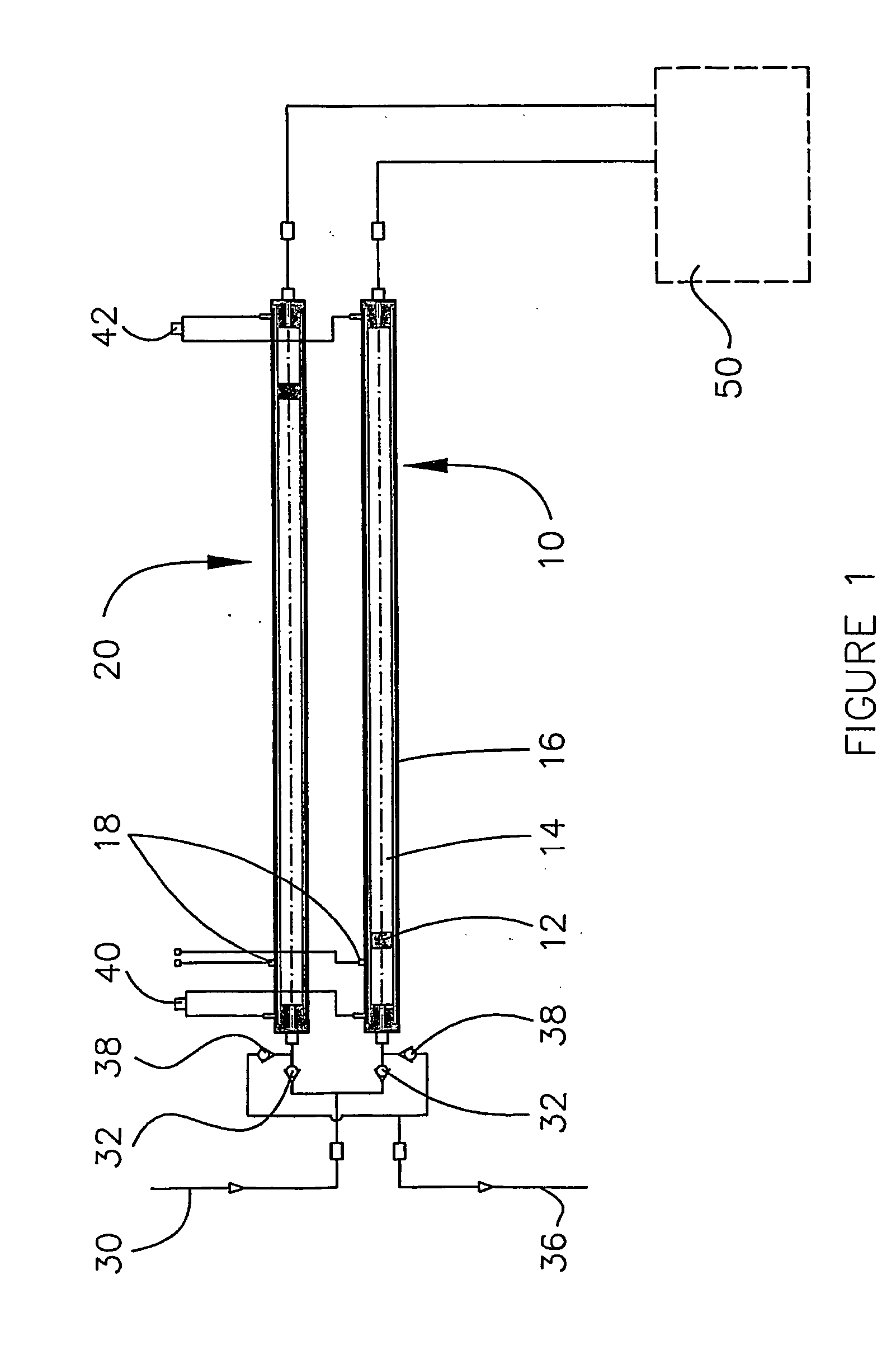Method and apparatus for compressing a gas to a high pressure
a gas compression and high pressure technology, applied in mechanical equipment, positive displacement liquid engines, pumps, etc., can solve the problems of increasing the manufacturing and maintenance costs of multi-stage systems, the inability to continue the operation of successive stages, and the increase of the cost of multi-stage compressors with the number of stages, so as to facilitate the reduction of the proportion of dead space volume, improve the efficiency of compressors, and improve the length to diameter ratio
- Summary
- Abstract
- Description
- Claims
- Application Information
AI Technical Summary
Benefits of technology
Problems solved by technology
Method used
Image
Examples
example 1
[0116] The graph shown in FIG. 6 represents data collected from a gas compressor that employed a free floating hydraulically driven piston. The compressor cylinder had a stroke length of 10 1 / 4 inches (about 261 mm) and a bore diameter of 1 3 / 8 inches (about 34.9 mm), which corresponds to a length to diameter ratio of about 7.5:1. The cylinder was cooled by ambient air that had a temperature of about 10 degrees Celsius.
[0117] The graph of FIG. 6 plots temperature rise in degrees Celsius on the vertical axis against compressor speed in cycles per minute. Nitrogen gas was supplied to the compressor at a temperature of about 0 degrees Celsius.
[0118] Table 2 below sets out specific parameters associated with each of the data points.
TABLE 2Compressor Speed (CPM)18.814.49.44.8Inlet Pressure (MPa)3.94.14.14.2Outlet Pressure (MPa)20.620.920.620.3Mass Flow (kg / hr)25.819.612.66.7
[0119] Plotted as a straight line at about 160 degrees Celsius is the temperature rise associated with isentrop...
example 2
[0123] The data set out in table 3 below was collected from three experiments done with a larger gas compressor that employed a free floating hydraulically driven piston to compress natural gas. The compressor cylinder had a stroke length of 54 inches (about 1370 mm) and a bore diameter of 2 1 / 2 inches (about 64 mm), which corresponds to a length to diameter ratio of about 21.6:1.
[0124] A coolant consisting of 50% glycol and 50% water was circulated through a cooling jacket surrounding the compressor cylinder. The temperature of the coolant supplied to the water jacket was about 15 degrees Celsius.
[0125] The hydraulic system employed a constant power hydraulic pump, resulting in piston velocity automatically decreasing as resistance to piston movement increased with increasing gas pressure.
[0126] The three experiments were done with different cycle frequencies (measured in cycles per minute) and different compression ratios.
TABLE 3Experiment#1#2#3Cycle Frequency3512Average Pist...
PUM
 Login to View More
Login to View More Abstract
Description
Claims
Application Information
 Login to View More
Login to View More - R&D
- Intellectual Property
- Life Sciences
- Materials
- Tech Scout
- Unparalleled Data Quality
- Higher Quality Content
- 60% Fewer Hallucinations
Browse by: Latest US Patents, China's latest patents, Technical Efficacy Thesaurus, Application Domain, Technology Topic, Popular Technical Reports.
© 2025 PatSnap. All rights reserved.Legal|Privacy policy|Modern Slavery Act Transparency Statement|Sitemap|About US| Contact US: help@patsnap.com



